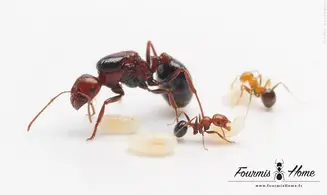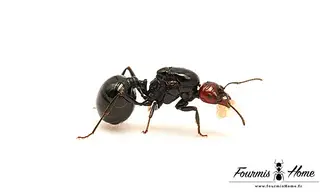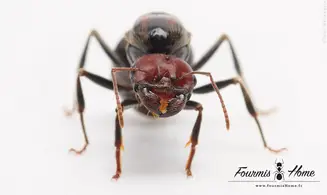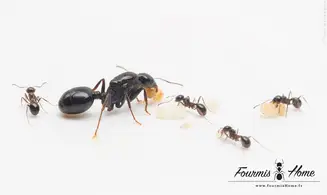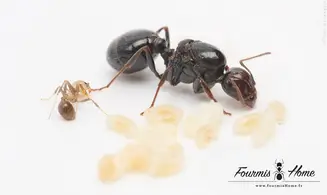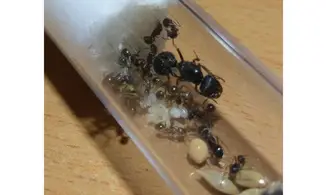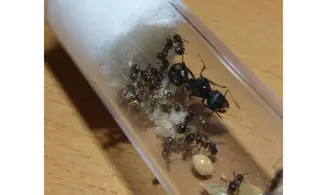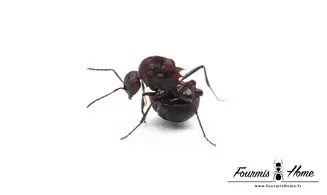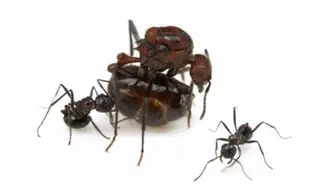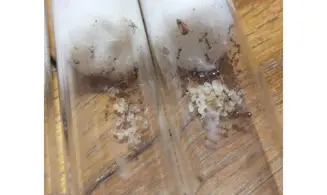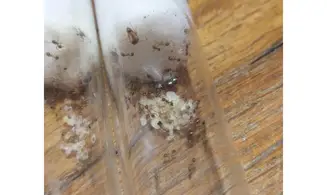Latin name: Messor angularis
Taxonomy: Subfamily: Myrmicinae Tribes: Pheidolini
Breeding level: Beginner
Geographical distribution: Kenya
Colony form: Monogynous
Queen: Size: 13 - 14mm Color: Shiny black and bright red head
Workers: Size: 7 - 9mm Color: Shiny black with bright red head
Major: Size 10 - 14mm Color: Black and brick red head
Male: Size: 9mm Color: Black
Food: Mainly seed-eaters who eat various seeds, but also many small insects such as mealworms, flies, mosquitoes, crickets, a water trough is mandatory for the creation of ant bread.
Humidity: Hunting area: 30 - 50% Nest: 50 - 70%
Temperature: Hunting area: 25 - 30°C Nest: 23 - 28°C
Hibernate: No
Type of nest: Plexiglas nest, nest with tubes, reconstituted stone nest.
Description: Very beautiful Messor from Kenya, a little bigger than Messor barbarus and with brighter colors and which does not need diapause.
Development: Swarming in spring.
Foundation: Occurs in a cloistered manner (without feeding) Development: 45 days from egg to worker (depending on temperature)
Size of the colony: Up to 50,000 individuals, the queen can reach the age of 25 years.
